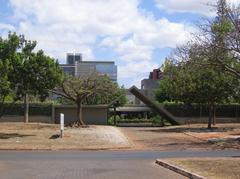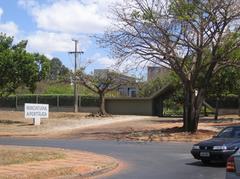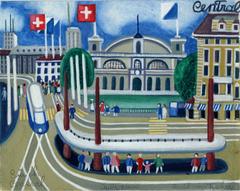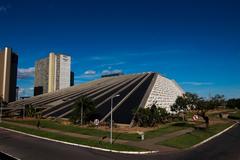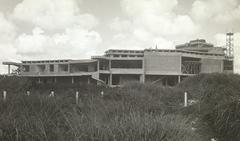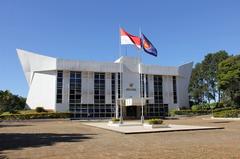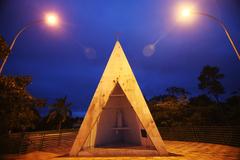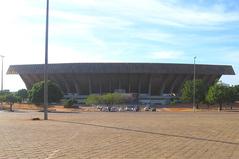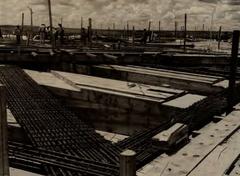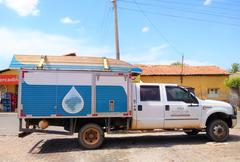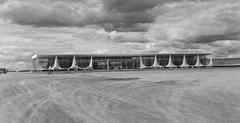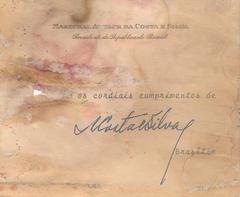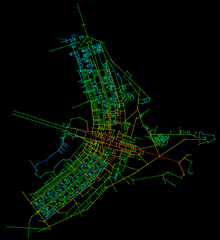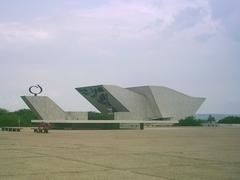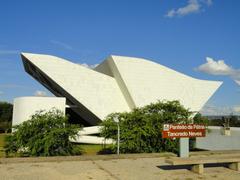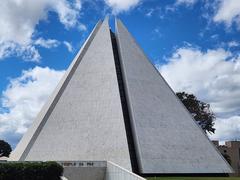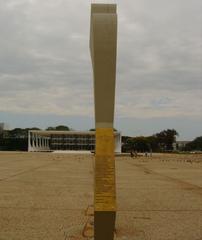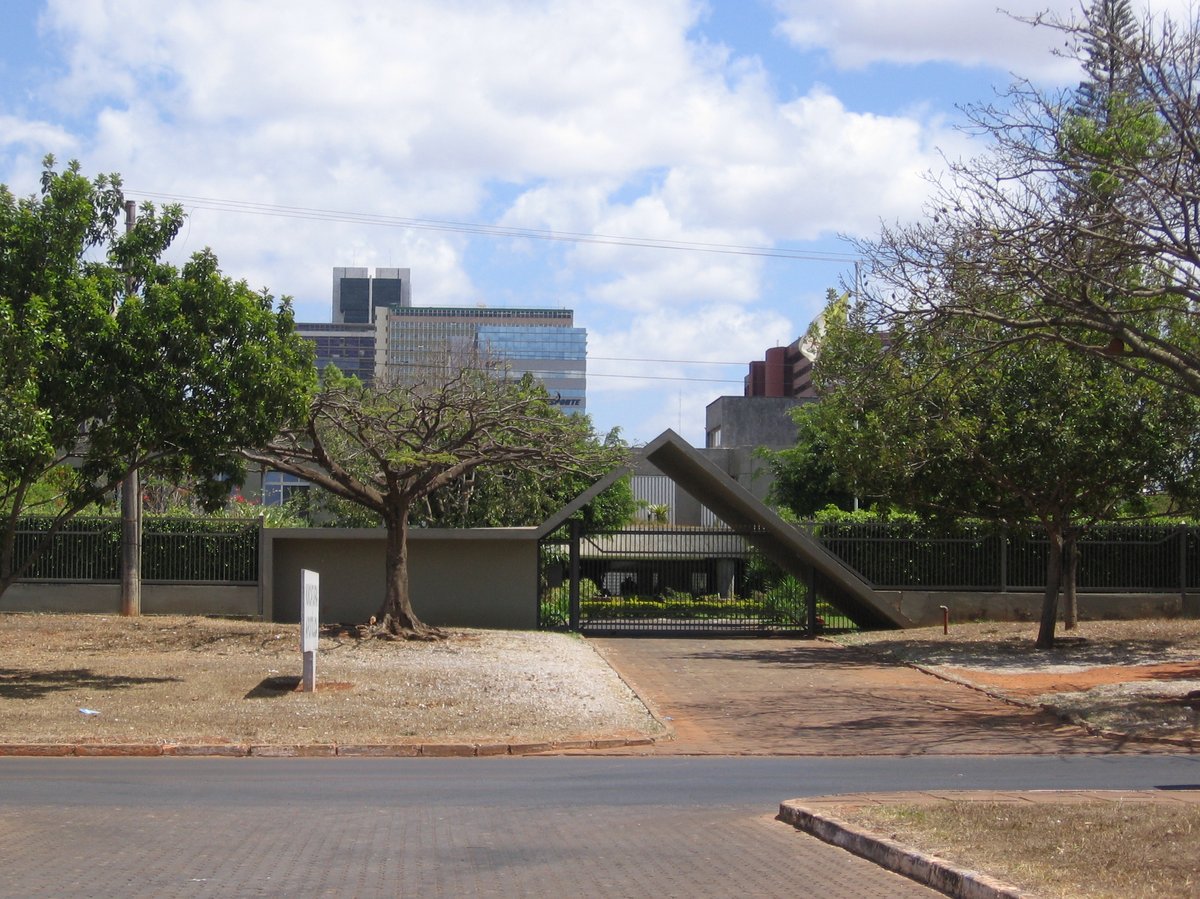
Apostolic Nunciature to Brazil: Visiting Hours, Tickets, and Guide in Brasília
Date: 14/06/2025
Introduction
The Apostolic Nunciature to Brazil in Brasília is a remarkable intersection of faith, diplomacy, and modernist architecture. Serving as the official diplomatic mission of the Holy See to Brazil, the Nunciature also stands as a symbol of nearly two centuries of strong relations between the Vatican and Brazil. While public access to the Nunciature itself is restricted, its architectural presence and diplomatic significance make it a noteworthy site for travelers interested in history, religion, and international affairs.
This guide provides a detailed overview of the Apostolic Nunciature’s history, architectural and diplomatic importance, practical visitor information, and tips for exploring the surrounding diplomatic sector of Brasília.
For additional information, consult the official embassy listing on evisa-europe.com and the Brasília tourism website.
Table of Contents
- History and Significance
- Architecture and Location
- Visiting Information
- Nearby Attractions
- Diplomatic and Ecclesiastical Roles
- Visitor Tips and Etiquette
- Frequently Asked Questions
- Conclusion and Travel Resources
- References
History and Significance
Historical Background
The Apostolic Nunciature to Brazil has its origins in the early years of Brazil’s independence, with formal diplomatic ties established soon after 1822. The Nunciature relocated from Rio de Janeiro to Brasília in 1960, aligning with the creation of the new capital and underscoring the Vatican’s commitment to engaging with Brazil at the highest governmental levels. Today, it continues to serve as both the Vatican’s embassy and the Pope’s representation to Brazil’s Catholic community, the largest in the world (evisa-europe.com).
Diplomatic and Ecclesiastical Importance
The Apostolic Nunciature acts as the Vatican’s ambassadorial office in Brazil. The Apostolic Nuncio, who holds ambassadorial rank, serves as both the Vatican’s diplomatic envoy to the Brazilian government and a key ecclesiastical figure, facilitating communications between the Holy See and Brazil’s Catholic hierarchy (evisa-europe.com).
The Nunciature plays a central role in managing church-state relations, negotiating ecclesiastical appointments, and promoting humanitarian, educational, and social initiatives in collaboration with Brazilian authorities (Wikipedia).
Architecture and Location
Modernist Setting in Brasília
Located on Avenida das Nações within Brasília’s diplomatic sector (Setor de Embaixadas Sul), the Nunciature is surrounded by embassies and major government buildings. Its understated modernist architecture reflects the Vatican’s preference for dignified simplicity, harmonizing with the visionary urban planning of Lúcio Costa and Oscar Niemeyer (Lonely Planet).
Official Address:
Avenida das Nações, Quadra 803, Lote 12
Setor de Embaixadas Sul
CEP 70416-900
Brasília – DF, Brazil
This location places the Nunciature near key sites such as the Palácio do Planalto and the National Congress.
Visiting Information
Can You Visit the Apostolic Nunciature?
The Apostolic Nunciature is not open to the public for tours or casual visits. Access is strictly limited to those with official business or by special invitation. There are no regular visiting hours or ticketing for tourists (EmbassyPages).
Office Hours:
Monday to Friday, 08:30–13:00 and 14:00–16:30. Closed on weekends and official holidays.
Contact for Appointments:
Phone: (+55) (2) 739 5725 / (+55) (2) 736 5738 (EmbassyPages)
Viewing and Photography
While public entry is not permitted, visitors are welcome to view the Nunciature’s exterior from public areas in the diplomatic sector. Photography of the exterior is generally allowed, but always seek permission if security personnel are present or if you are close to the property.
Accessibility and Transportation
- Access: Easily reachable by taxi, rideshare, or local buses serving the diplomatic sector.
- Accessibility: The area is relatively accessible for those with mobility needs. Confirm specific accommodations directly if attending by appointment.
- Parking: Limited; using public transport or taxis is recommended.
Nearby Attractions
Combine your visit to Brasília’s diplomatic quarter with these notable sites:
- Catedral Metropolitana de Brasília: Oscar Niemeyer’s renowned cathedral.
- Palácio do Planalto: The official workplace of the President of Brazil.
- Itamaraty Palace: Headquarters of the Ministry of Foreign Affairs, famous for its modernist design.
- Santuario Dom Bosco: Known for its remarkable blue stained-glass windows.
- Praça dos Três Poderes: The central plaza housing Brazil’s executive, legislative, and judicial branches.
These landmarks exemplify Brasília’s architectural heritage and are easily accessible from the Nunciature’s location (LaidBackTrip).
Diplomatic and Ecclesiastical Roles
Representation and Mediation
The Apostolic Nunciature is at the heart of Brazil–Holy See relations, facilitating religious, cultural, and humanitarian initiatives. It supports the Catholic Church’s activities, mediates during political or social crises, and participates in national events, such as state ceremonies and papal visits (Wikipedia).
Social and Humanitarian Initiatives
The Nunciature collaborates with local and international organizations to further social justice, education, and healthcare, reflecting the Vatican’s broader mission of promoting peace and human dignity.
Visitor Tips and Etiquette
- Language: Portuguese is the official language; English may be spoken within diplomatic circles, but basic Portuguese is helpful (brazilpulse.com).
- Dress Code: Modest, professional attire is expected for any official business.
- Security: The diplomatic sector is well-patrolled and safe, but always remain aware of your surroundings, especially at night (travel.state.gov).
- Conduct: Be respectful and discrete, especially regarding photography and interactions with staff or security.
Frequently Asked Questions
Q: Can tourists visit the Apostolic Nunciature in Brasília?
A: No, public tours are not available. Access is limited to official appointments.
Q: Are there visiting hours or tickets?
A: No public visiting hours or tickets are offered, as the Nunciature is a diplomatic mission.
Q: How do I arrange an appointment?
A: Contact the Nunciature in advance by phone for any official matter (EmbassyPages).
Q: Is the area wheelchair accessible?
A: The diplomatic sector is accessible, but confirm specific requirements directly with the Nunciature.
Q: What are the best nearby attractions?
A: The Brasília Cathedral, Palácio do Planalto, and Itamaraty Palace are all close by.
Conclusion and Travel Resources
The Apostolic Nunciature to Brazil, while not a conventional tourist attraction, is a landmark of great historical, diplomatic, and architectural value in Brasília. Its presence underscores the enduring partnership between the Vatican and Brazil and offers a unique glimpse into the workings of faith and diplomacy in a modernist urban setting.
Visitors can appreciate the Nunciature’s architecture from the outside and explore the surrounding diplomatic sector, combining their trip with visits to Brasília’s celebrated landmarks.
Stay informed and enhance your travel experience:
- Consult the official embassy listing before your visit.
- Download the Audiala app for curated guides, virtual tours, and insider tips.
- Follow Brasília travel channels on social media for updates and inspiration.
References and Further Reading
- evisa-europe.com
- Brasília tourism website
- EmbassyPages
- Lonely Planet
- LaidBackTrip
- Wikipedia
- brazilpulse.com
- travel.state.gov
- Holy See’s diplomatic missions page
- World History Journal
